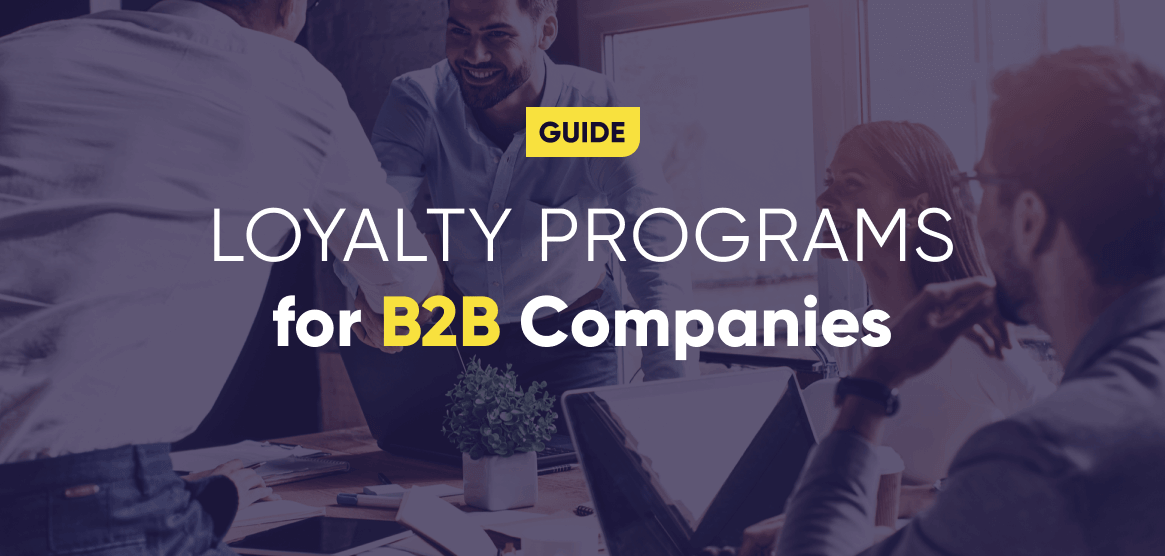
The golden rule of customer retention is that positive experiences are always remembered. A customer is more likely to engage with a business in additional ways, make a second purchase, tell their friends about it, and share their data if they are a part of something memorable. This restriction applies to B2B businesses as well. In actuality, the customer experience approach is now embraced by 84% of B2B firms. Organizations will eventually turn to B2B loyalty programmes with best-in-class solutions as the level of competition rises in order to both retain and enhance their connections with customers, partners, and suppliers.
A B2B Loyalty Program: What Is It?
Business-to-business (B2B) loyalty programmes, also known as B2B rewards programmes, are customer retention strategies with particular features and reasoning that are intended to assist companies build brand loyalty with the businesses they sell to. They are very different from their B2C counterparts in terms of progression and incentives.
It makes sense that businesses in this sector want to increase their market share given that the B2B eCommerce market alone is expected to reach $1.8 trillion by 2023. Making sure current customers or contacts continue to be devoted, content, and engaged is one method to do this.
B2B Market Characteristics & Challenges
A loyalty programme is a sensible step for B2B businesses since selling to customers generates more profits than selling to consumers. So it’s crucial to keep your most valuable customers and earn their loyalty. The process of acquiring new clients in the B2B sector, however, takes more time.
The B2B market also has the following qualities and difficulties:
less deals, but bigger deals
Due to its dependence on consumer patterns, demand is indirect and subject to significant fluctuations.
a drawn-out, structured purchasing process
a stronger emphasis on long-term partnerships
more difficult purchasing choices
Features of the Best B2B Loyalty Programs to Make Your Business Stand Out
It’s time to delve further into the individual qualities that define B2B loyalty programmes now that the general architecture and traits have been covered.
Perks
A loyalty programme that is classified as a “perks programme” without a points system, tiers, or any other mechanism that encourages advancement. Members instead have access to all perks as soon as they sign up. B2Bs can use the benefits strategy to create a VIP club for their customers. Members can still be contacted by businesses through surveys or giveaways, but if they stop being partners or don’t make a purchase within a certain window of time, they will lose access to the membership programme.
Tiers
In a loyalty programme, tier progression typically depends on spending or points. Invitations fall into a third, less popular kind. This means that for B2B businesses, depending on the magnitude of the sale, consumers are put directly into a tier rather than being allowed to advance on their own. Naturally, prizes at higher tier levels are better, and customers can choose to downgrade or upgrade during their subsequent orders.
cooperative advantages
Partner and supplier education and training can work as a powerful loyalty motivator. After all, improving their performance will allow you to strengthen your company connection, which is in your best interest. Additionally, if you assist a smaller, less seasoned client by imparting marketing, sales, or other information, they will partially credit you for their success.
Partner benefits
For B2B loyalty programmes, branded goods, gift baskets, and other items are also suggested rewards. The explanation is straightforward: customer organisations can get these gifts as a “free bonus” with their order and then give them to their employees to boost morale. Everyone benefits from it. Additionally, if you already have solid partner relationships, you can purchase these benefits for a very modest cost.
Experienced benefits
Experience-based incentives might range from member events to complimentary movie tickets for a client’s staff. These incentives don’t have to be pricey. Simply put, they must be creative enough to excite your customers. Additionally, when your customer’s staff is content, your client is as well.
referral system
In B2B as in B2C, word-of-mouth advertising is as as vital, if not more so. Customers that refer people to the loyalty programme and use your name should be rewarded. Additionally, as membership requires direct sales, each client referred may result in additional earnings.
coalition adherence
Although coalition loyalty programmes and B2B loyalty programmes are not the same, there may be some overlap. Businesses that run coalition loyalty programmes can split them into two halves. The secret portion is for the tenants, while the exposed portion is designed to reward customers. In this way, the incentive programme motivates residents to work harder and be more active.
Interactive surveying
Your incentive system can incorporate consumer profiling in a number of subtle ways. For instance, some benefits might not be revealed until the buyer completes a quick survey. Alternatively, customers can earn more entries into a drawing for a prize by supplying more details. In either case, gamified profiling is a useful technique for gathering input and more information for your personalisation plan.
Prepare to Widen Your Horizons
When implemented properly, B2B loyalty programmes are excellent tools for partner engagement and customer retention that may help your brand in a variety of ways. Include Antavo in your loyalty programme RFP if you’re interested in the capabilities we provide as a pure-play loyalty provider.
While you wait, get motivated by reading our most read ebook about the steps and specifics of creating and launching a loyalty programme.
